
Lumps and Bumps on Your Pet –
Dr. LaHue, DVM, MPVM
One of the most common questions I get from owners is what a new lump on their dog or cats is and what should be done about it. Our pets can get lumps from a variety of causes, including abscesses, cysts and tumors. In this article, I go through the details and dispel myths about tumors and lumps
Abscesses:
An abscess is an area of infection underneath the skin that fills with pus. They are most often caused by a wound that gets infected and heals over before the infection is healed creating an infection that doesn’t have a place to drain. Often foreign material left in the wound can create a initiator for infection so that it never goes away. Abscesses usually come up quickly and are most often red, warm, and painful and may or may not have drainage from them. Abscesss from wounds are most common in cats, especially outdoor cats that fight with other cats. Dogs more often get them from running into things or secondary to impacted anal glands. While most small abscesses are localized they can spread infection and make your pet sick overall and should thus be seen by a veterinarian quickly. Treatment usually involves incising the abscess so the pus can drain, removing any foreign material and a course of antibiotics. Prognosis is excellent with treatment.
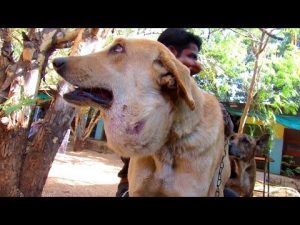
Cysts:
Like abscesses, cysts are caused by an accumulation of fluid under the skin. However in the cases of cysts this liquid is sterile and non-infected as it is from normal, fluid producing cells, like oil glands. They are usually not warm, red or painful unless the cysts are really pressing on the skin. Cysts can also rupture, in which case they may become infected. The most common, sebaceous cysts, are from the oil producing glands and when they rupture may exude a white, waxy material. They can be treated by draining and hot packing if they become uncomfortable.
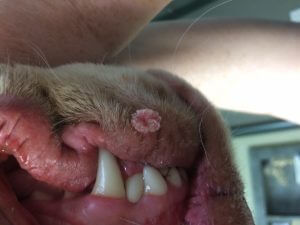
Warts:
Warts are small raised bumps that have a cauliflower like appearance at the tip. They are caused by a virus and usually appear in the mouth. In most animals, they go away in a matter of months on their own. If they persist then they may need to be removed if they are causing a problem or becoming infected. They are transmitted between dogs from direct contact or through shared toys, water dishes, and food dishes.
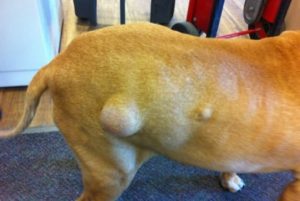
Tumors:
Tumors are abnormal excessive growth of cells. This occurs because of genetic mutations that block the normal regulation of cell growth. While some are inherited most are due to mutations that accumulate through the lifespan of the pet, so most often occur in older animals. Tumors can either be benign or cancerous. Within cancerous tumors some invade only local tissue and some can spread to other organs.
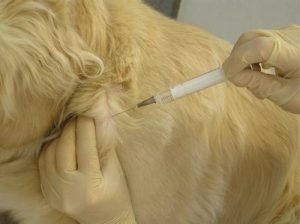
Benign Tumors: These are tumors that are localized, grow slowly, and do not spread into surrounding tissue or to other parts of the body and thus are usually freely movable. Occasionally if mutations accumulate these can turn into cancerous tumors. However, they are generally not a concern and are usually not removed unless their size or location causes a problem. The most common types are lipomas which are from fat tissue and sebaceous adenomas, from sebaceous (oil producing) cells.
Cancerous Tumors: There are a huge number of different types of cancerous (or malignant) tumors. Theses can spread through local invasion into surround tissues (making them tightly attached to the body) or to distant organs, especially the liver and lungs. Cancerous tumors that have the potential to spread to the rest of the body are the most serious and can often be fatal. Thus, early recognition, removal and treatment is necessary to preserve your pet’s lifespan. The most common type of cancerous skin tumor are mast cell tumors.
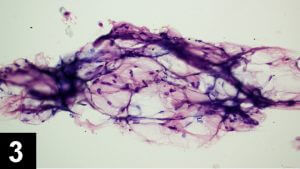
Things to tell your Veterinarian:
If you notice a lump on your pet, get it checked out. It’s always better to be safe than sorry. When you take your pet to the vet try to the let them know the following information:
- When you first noticed the lump
- How much has it increased in size since you noticed it (ie rate of growth)
- Any history of fighting or injury
- Has it been bothering your pet or has your pet been biting at it
- Previous history of other lumps, cancers, etc.
- If your pet has lots of lumps map them out so you can follow their growth and any changes, as they may not all be the same thing!
Diagnosis:
While some lumps have pretty specific appearances it should be noted that palpation alone cannot diagnose a lump (the exception is an abscess that is already draining). There are two main techniques for a diagnosis, the fine needle aspirate and the biopsy. Both are described below:
Fine-needle aspirate (FNA): With a fine needle aspirate, a needle is inserted into the lump and moved around, sometimes with negative pressure from a syringe. The material is then placed on a slide and stained. Sometimes (abscesses, cysts) your veterinarian may look at it and give a diagnosis right away. Other times (most tumors) the slide will be sent off to be diagnosed by a specialist
Biopsy: With a biopsy, a whole piece of tissue is taken out, placed in formalin, and sent in for diagnosis by a pathologist. This is the gold standard of diagnosis since the pathologist can look at the tissue as it appears as a whole, instead of just cells. It is usually performed for tumors and not abscesses or cysts. This is a more in-depth procedure, usually requiring anesthesia. Sometimes it is better to surgically remove the whole tumor and then have it sent in for diagnosis. This is referred to as a surgical biopsy.
Hopefully this will help you prepare next time you see a new lump or bump
